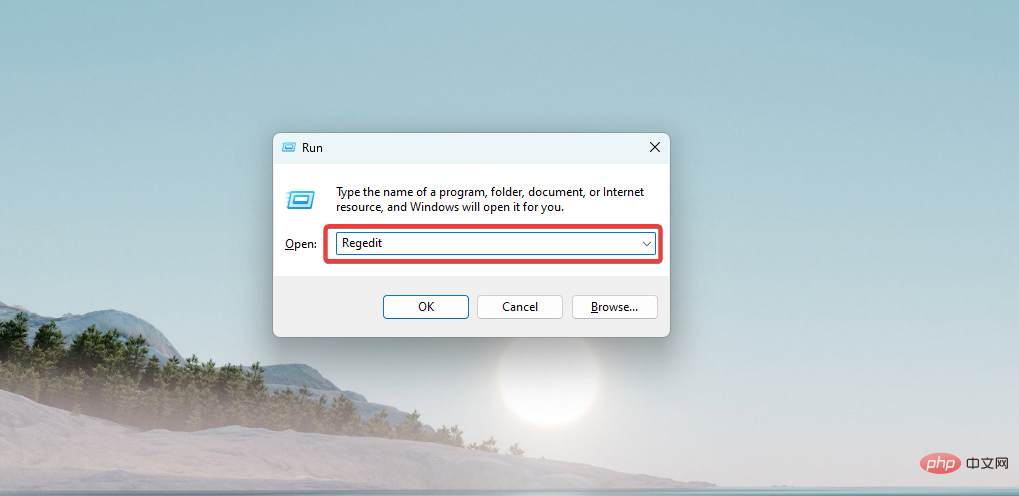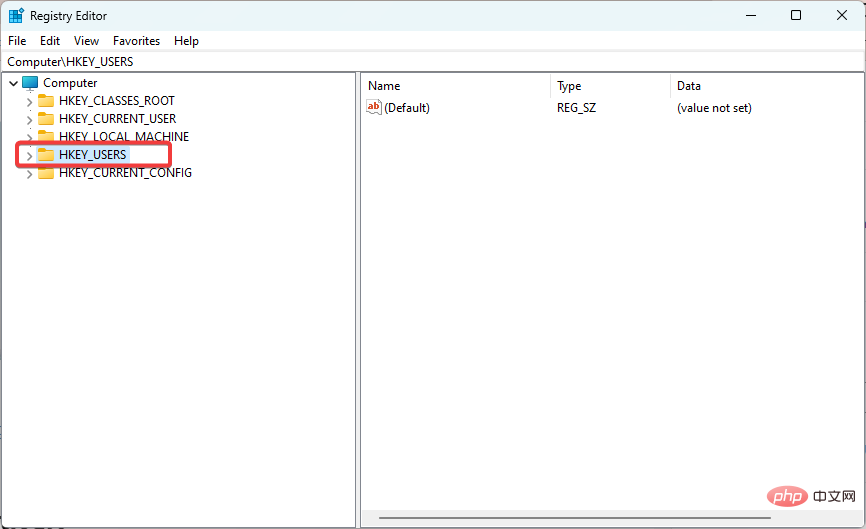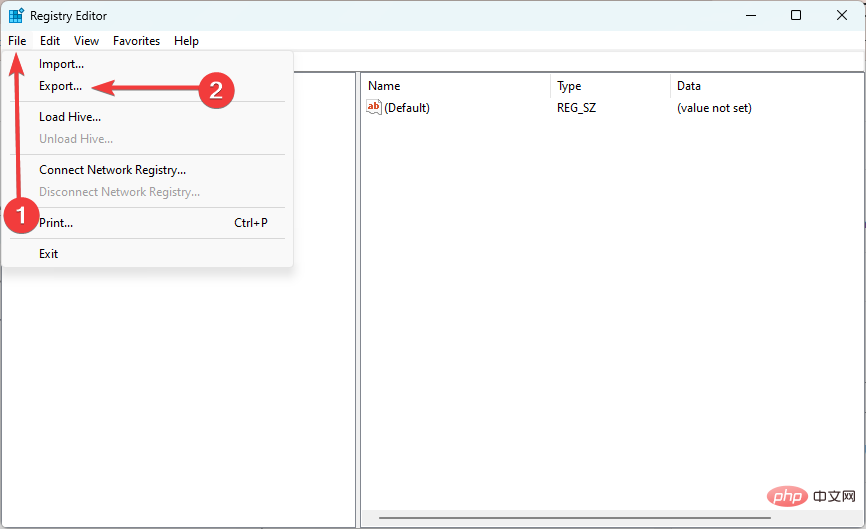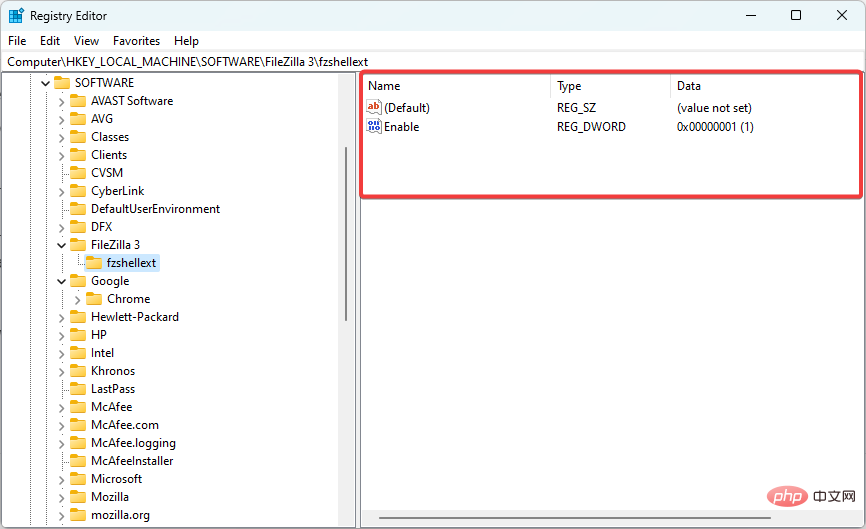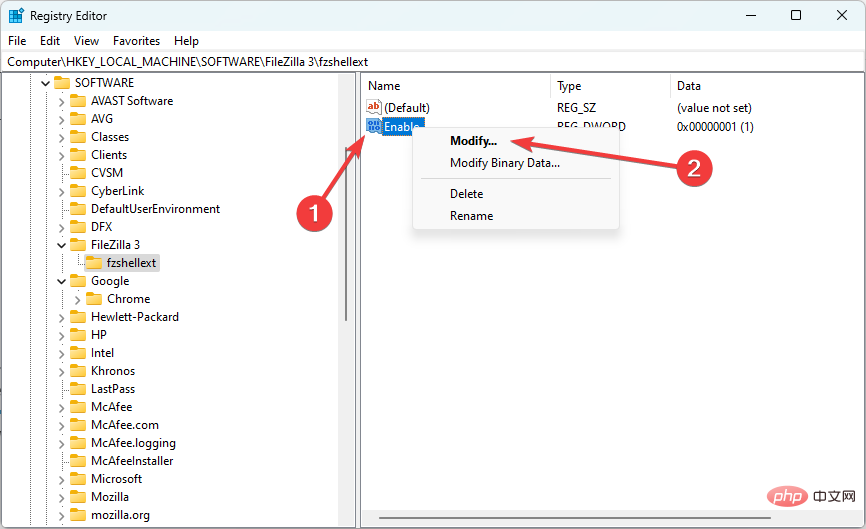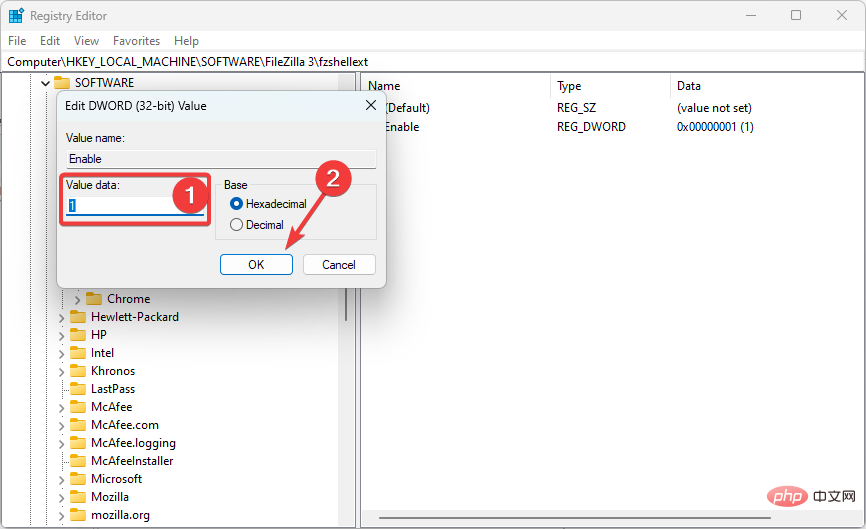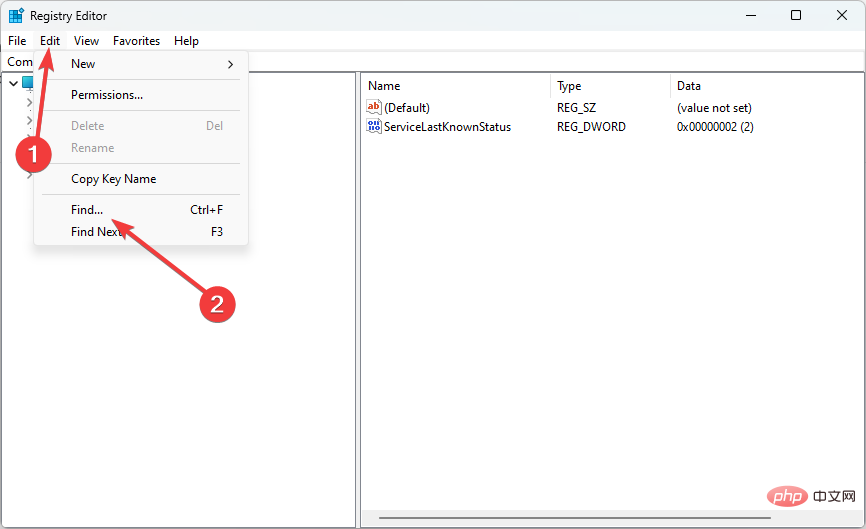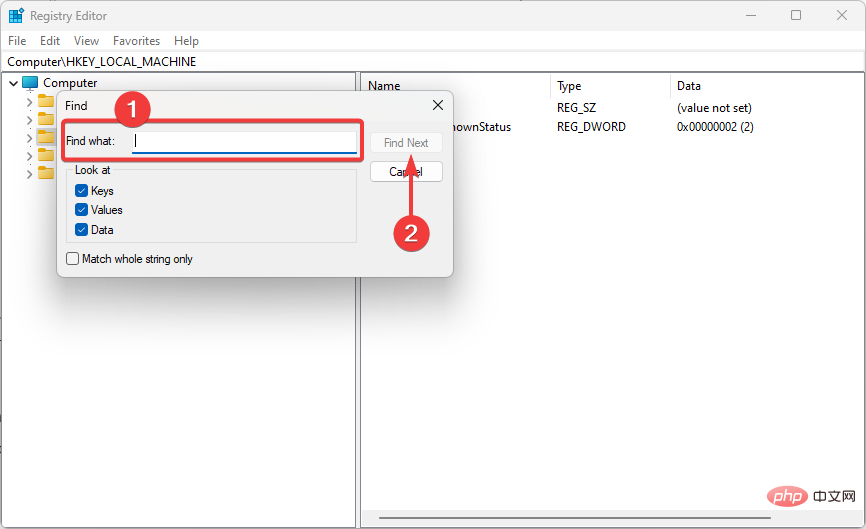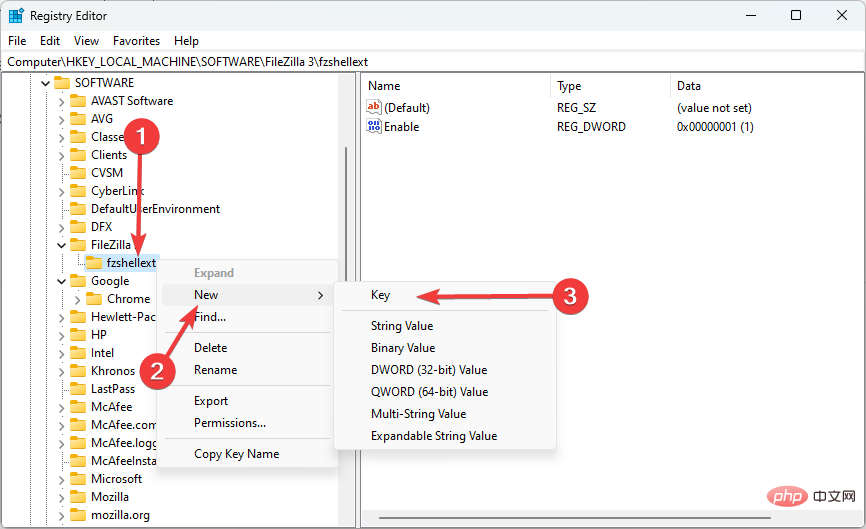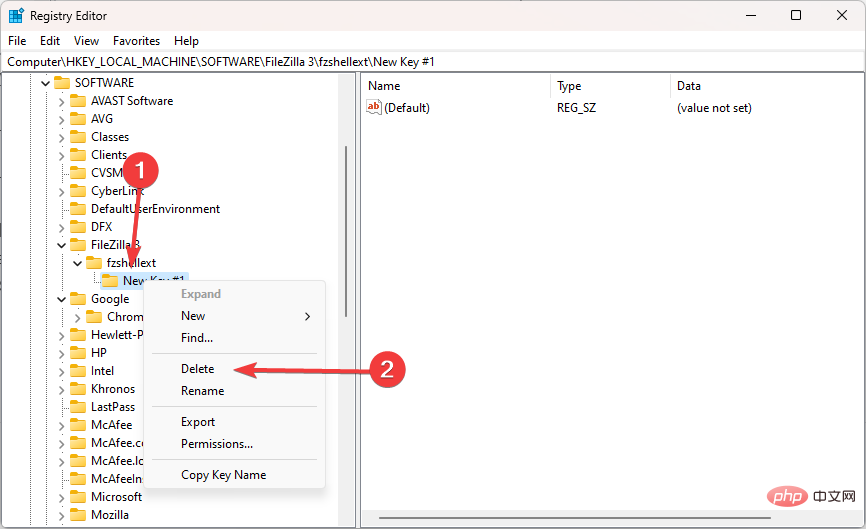Home >Common Problem >Master the Windows Registry with Registry Editor in Windows 11
Master the Windows Registry with Registry Editor in Windows 11
- WBOYWBOYWBOYWBOYWBOYWBOYWBOYWBOYWBOYWBOYWBOYWBOYWBforward
- 2023-04-16 08:25:022987browse
The Windows Registry is a database of configuration settings for the Windows operating system and the software that runs on it. It is an important part of the system as it stores information about hardware, software and user settings.
If you want to customize your Windows 11 computer or troubleshoot a problem, you need to know how to use the Registry Editor, which allows you to view and edit the registry.
In this article, we will show you how to access the Registry Editor in Windows 11 and provide tips for using it safely and effectively.
How to enter the Registry Editor?
- Press the key to open the "Run" dialog box. WindowsR
- Type regedit in the Run dialog box, and then press . Enter

- #The Registry Editor will open.
Now that you're inside the tool, let's explore some tips for using Registry Editor as well as some common tasks.
How to use Registry Editor safely and effectively?
1. Make a backup
- Open the Registry Editor as shown in the previous section.
- Select the key or set of keys to back up (in the example below, we selected HKEY_USERS).

- Click on the File menu and select the Export option.

It is important to back up the registry before making any modifications. This will allow you to restore the registers to their previous state if any problems arise due to your modifications.
2. Modify the value
- Open the Registry Editor and navigate to the value you want to modify (after selecting the registry key, the modifiable elements will be displayed in the right pane ).

- Right-click on any of these elements and select "Modify" (you can also select "Modify Binary Data").

- Now enter the new value you want in the "Value Data" text field and click OK.

#Be careful when modifying values; be sure to enter the correct data type and value. Incorrect data types or values can cause problems with the operating system or application.
Expert Tip:
Some PC problems are difficult to solve, especially when they involve corrupted repositories or missing Windows files. If you are having trouble fixing errors, your system may be partially corrupted.
We recommend installing Restoro, a tool that will scan your machine and determine what the fault is.
Click here to download and start repairing.
Remember to only change the registry if you are sure it is necessary, as unnecessary changes can increase your risk of encountering problems.
3. Add a value
- Open the Registry Editor and navigate to any key to which you want to add a new value.
- Click any empty space in the right pane, hover over New, and select any value type you want to add.

- Name the newly created value. Then modify it accordingly using the steps shown in the Modify Values section.
4. Use the Registry Editor search function
- Start the Registry Editor.
- Click the Edit menu and select Find.

- Alternatively, you can press . CtrlF
- In the Find pop-up box, type the name of the key you want in the Find what text field and click Find next ".

Registry Editor includes a search feature that allows you to find specific keys or values in the registry. This can be helpful if you are looking for a specific setting or trying to solve a problem.
5. Add registry keys
- Start the Registry Editor.
- Navigate to the path where you want to add the new key. In our case, we have navigated to the following path:
<strong>Computer\HKEY_LOCAL_MACHINE\SOFTWARE\FileZilla 3\fzshellext</strong> - Right click on the element , hover over New, and select Key.

- Name the key. In our example, we'll call it NewKey#1.

- You can now edit the value of this key using the same process described in the Modify Value section.
6. Delete the value
- Start the Registry Editor.
- Navigate to the key you want to delete. In our case, we have navigated to the following path (the new key we created in the previous section):
<strong>Computer\HKEY_LOCAL_MACHINE\SOFTWARE\FileZilla 3\fzshellext\New Key #1 </strong> - Right-click the key and select Delete.

#Be careful when deleting keys as this may cause problems with the Windows operating system or applications. If you're not sure whether you can safely delete your key, do some research or ask for help before proceeding.
These pointers will help you use Registry Editor to change the registry and tune your system in a safe and efficient way.
Please exercise caution when modifying your system and seek help when necessary. You may encounter a Regedit cannot edit error that may block the Windows registry, but our solutions will help you.
The above is the detailed content of Master the Windows Registry with Registry Editor in Windows 11. For more information, please follow other related articles on the PHP Chinese website!


